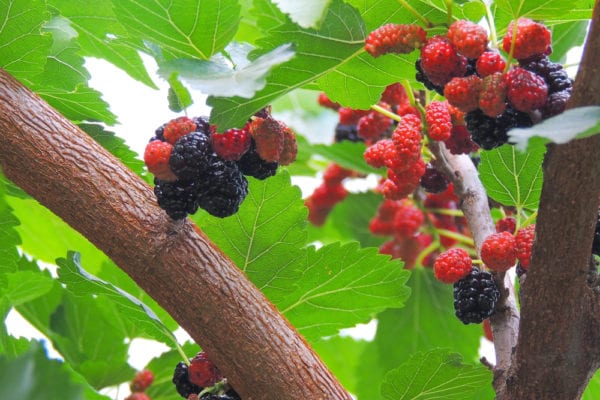The legendary roots of Lake Como’s mulberry trees
The legendary roots of Lake Como’s mulberry trees
The legendary roots of Lake Como’s mulberry trees
-
Hannah
-
Hannah


In England, children sing a nursery rhyme relating to the mulberry bush. The first verse is as follows:
Here we go round the mulberry bush,
The mulberry bush,
The mulberry bush.
Here we go round the mulberry bush
On a cold and frosty morning.
This rhyme dates back to the nineteenth century, and it is thought that it relates to Britain’s attempt at that time to get into the silk industry – which failed, because it turned out Britain was too cold and frosty for the mulberry trees, home of the silkworm, to survive.
In northern Italy, however, the climate is much more favourable for the silkworm. My new book, Concerto, is set on Lake Como, which is famous all over the world for the silk produced there. It was back in 1400 that the Duke of Milan first planted mulberry trees around the lake, and soon factories sprang up and silk became a major basis for the area’s economy. There was even a school for training ‘silk masters’.
The hero of Concerto, Umberto, owns a silk-manufacturing factory, with a nursery where the silk worms are reared. He explains to the heroine, Catriona, that there are two types of mulberry trees on the Monteverdi estate. The white mulberry is used for the rearing of silk worms, but the red mulberry has a bitter sap to which few insects are drawn. They’re useful nonetheless, for the fruit of the red mulberry makes delicious jam.
The white mulberry is much more widespread than the red, and there is a legend that explains this. Have you heard of Pyramus and Thisbe, from the Roman writer Ovid’s Metamorphoses? These two lovers from the city of Babylon were forbidden to marry because of their families’ rivalry; they were, in fact, the original Romeo and Juliet. In Concerto, Umberto tells the story of Pyramus and Thisbe, a story of love, passion – and tragedy. I write:
‘Finally, they decided to run away and get married, come what may. They chose to meet by a white mulberry tree which lay outside the city gates. Heavily veiled, Thisbe managed to escape her home unnoticed and made her way stealthily to the mulberry grove. The place was deserted and she lifted her veil to look around for Pyramus. Instead of her lover, she found a lioness, its mouth bloodied from a recent kill. Thisbe fled, inadvertently dropping her veil. The lioness sniffed at the veil with curiosity, tore and tossed it with her blood-stained jaws and then crept away. When Pyramus arrived, he did not find his beloved Thisbe. Instead, there were tracks on the ground made by a wild beast and near them, a woman’s veil, torn and blood-stained. He instantly recognized it as Thisbe’s. Mad with sorrow and guilt because he had not been there to defend her, he drew his sword and fell upon it at the foot of the white mulberry tree, soaking its roots with his blood.
‘Meanwhile, by now convinced the wild animal had gone, Thisbe crept back to their meeting place. She found Pyramus there with his sword in his heart, her veil still clasped in his hand. The dying Pyramus opened his eyes and fixed them upon her, and she gazed back at her lover, heartbroken. With the same sword she stabbed herself, and the lovers perished together.
‘There, the parents found them after a weary search, and they were buried together in the same tomb. But the berries of the mulberry tree turned red that day, and that is how the red one was born.’
To this day, Lake Como is considered the silk capital of the world. If you are ever fortunate enough to visit the area, then the Como Silk Museum is well worth a look, and if you are interested in viewing some silk, then Como Silks is a good starting point.
So much beauty, and all of it created by the Duke of Milan planting those first mulberry trees!